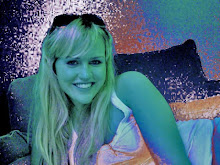2) Communicate - don't decorate: the work needs to support the concept and if it is decorated the communication/main point will be lost.
3) Speak with one visual voice: all parts present in the design need to relate harmoniously to everything else and communicate the same message.
4) Use two typeface families maximum. Ok, maybe three: Chose the typefaces that support the concept and mood of the work. The type should not compete with the rest of the pieces but work in-sync with them all.
5) Use the one-two punch!: focus the viewers attention on one thing and through that, it leads them on to the next or rest of the piece.
6) Pick colors on purpose: Color is very important and catches the viewers attention and sets the mood for the piece. It can be used to affect hierarchy and legibility.
7) If you can do it with less, the do it: "less is more" if there is too much on a piece then the audience does not know where they are supposed to look and it gets confusing and frustrating.
8) Negative space is magical - create it, don't just fill it up!: Having white space calls attention to content and gives the eye a resting place.
9) Treat the type as image, as though it's just as important: type needs to relate to everything in the design and not just be smacked onto the piece.
10) Type is only type when it's friendly: if the type chosen is not readable then what is its purpose? Chose a typeface that is legible and eye catching.
11) Be universal; remember that it's not about you: others have to be kept in mind when designing because if it only relates to you and know one else, the design fails.
12) Squish and separate: be rhythmic yet change the size, color, and weight of objects to create contrast.
13) Distribute light and dark like firecrackers and the rising sun: create a wide range of tone value.
14) Be decisive. Do it on purpose - or don't do it at all: if there is no purpose, why do it? Make something that supports the concept and if it doesn't get rid of it.
15) Measure with your eyes: design is visual:
16) Create images - don't scavenge: design needs to be unique and stand out. Stock photos are over used and we should not rely on what already exists.
17) Ignore fashion. Seriously: fashion changes everyday and if you create a design that has more of a meaning then it will have a longer lasting impression.
18) Move it! Static equals dull: a layout needs to create a sense of movement for the eye. If it is dull and flat, the viewer will just move on and become uninterested.
19) Look to history, but don't repeat it: we can be inspired by the past but should develop the ideas we get from it.
20) Symmetry is the ultimate evil: there is not much movement with symmetrical designs which leaves them boring.
Three most important rules:
1) Have a concept
2) Speak with one visual voice
3) Be decisive. Do it on purpose-or don't do it at all.
Without those three rules, there would be no design. Having a concept is definitely the most important because it is the beginning of what the design will communicate.
Three rules to improve:
1) If you can do it with less, then do it.
2) Treat the type as image, as though it's just as important.
3) Symmetry is the ultimate evil.
I feel that I always start out with way too much on a page. After the first critique I am able to get rid of most of the nonsense but I should pay more attention to what I am trying to communicate and only insert the necessary design elements. Then there is the type, which I have had trouble with in the past. It is not until the end of my design that I "plug" in my type elements. Avoiding symmetry is another thing that I need to improve on. I know that i've improved from the beginning of the year but some of my work still is too symmetrical.
There weren't really any rules that I thought should be ignored but if I have to pick three they would be the following:
1) Ignore fashion. Seriously
2) Create images-don't scavenge (I agree with this rule but I think it is okay to gather some of the materials which we do not have access to)
3) Measure with your eyes: design is visual.

I had two of the same rules to improve too Amanda. I also chose treating type as an image and doing it with less. I have the same problem, I always start out with a lot of ideas and things to incorporate and it's hard to narrow it down to what is really important. Like what you said, doing the type at the end of the design process probably isn't the best way but I'm working on the same problem!
ReplyDelete